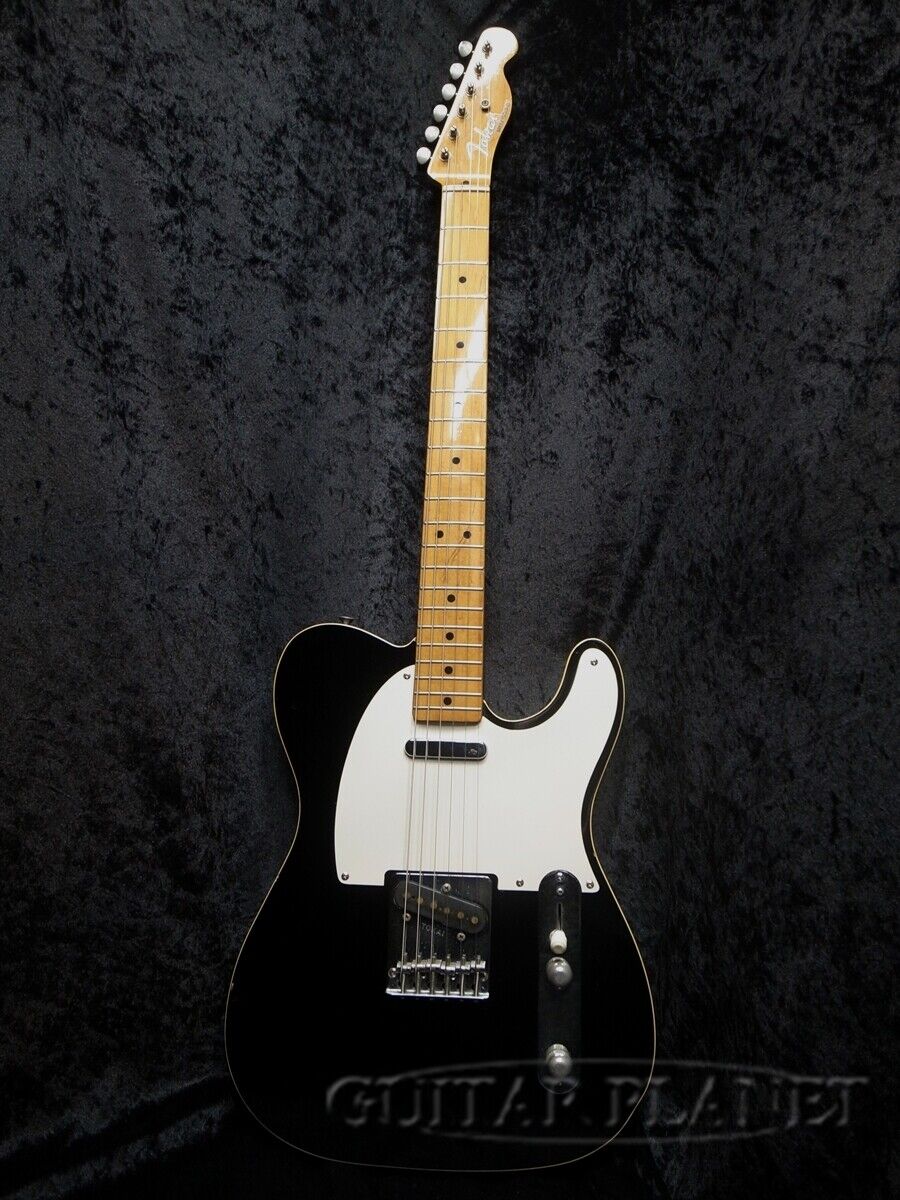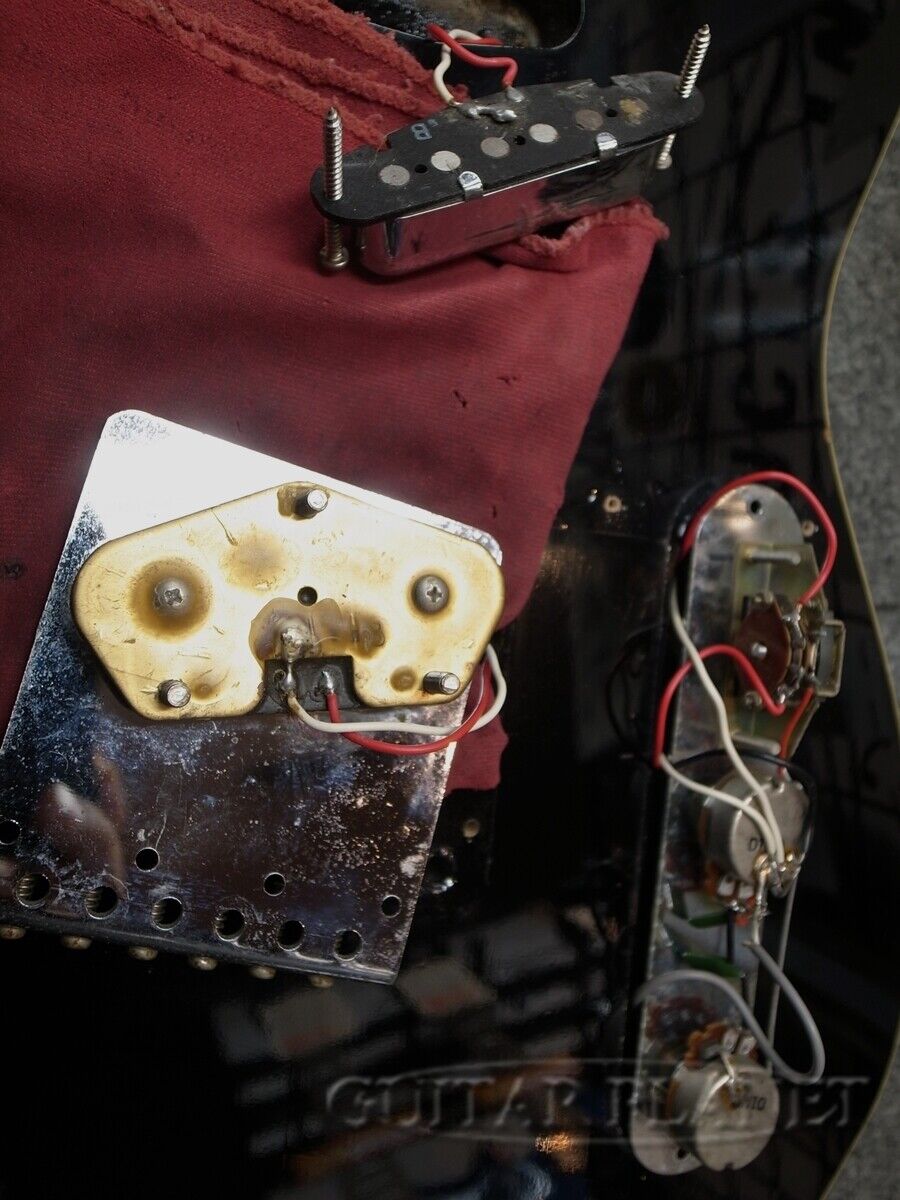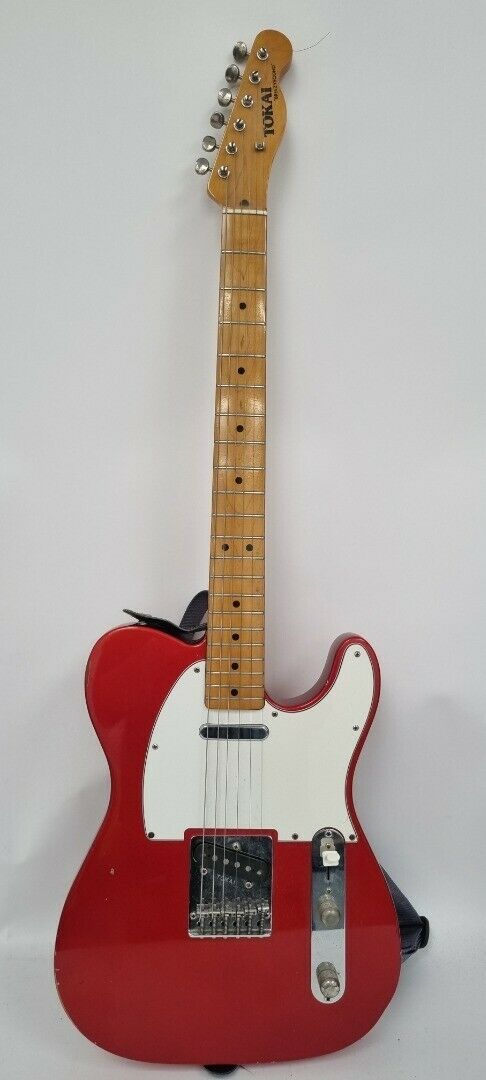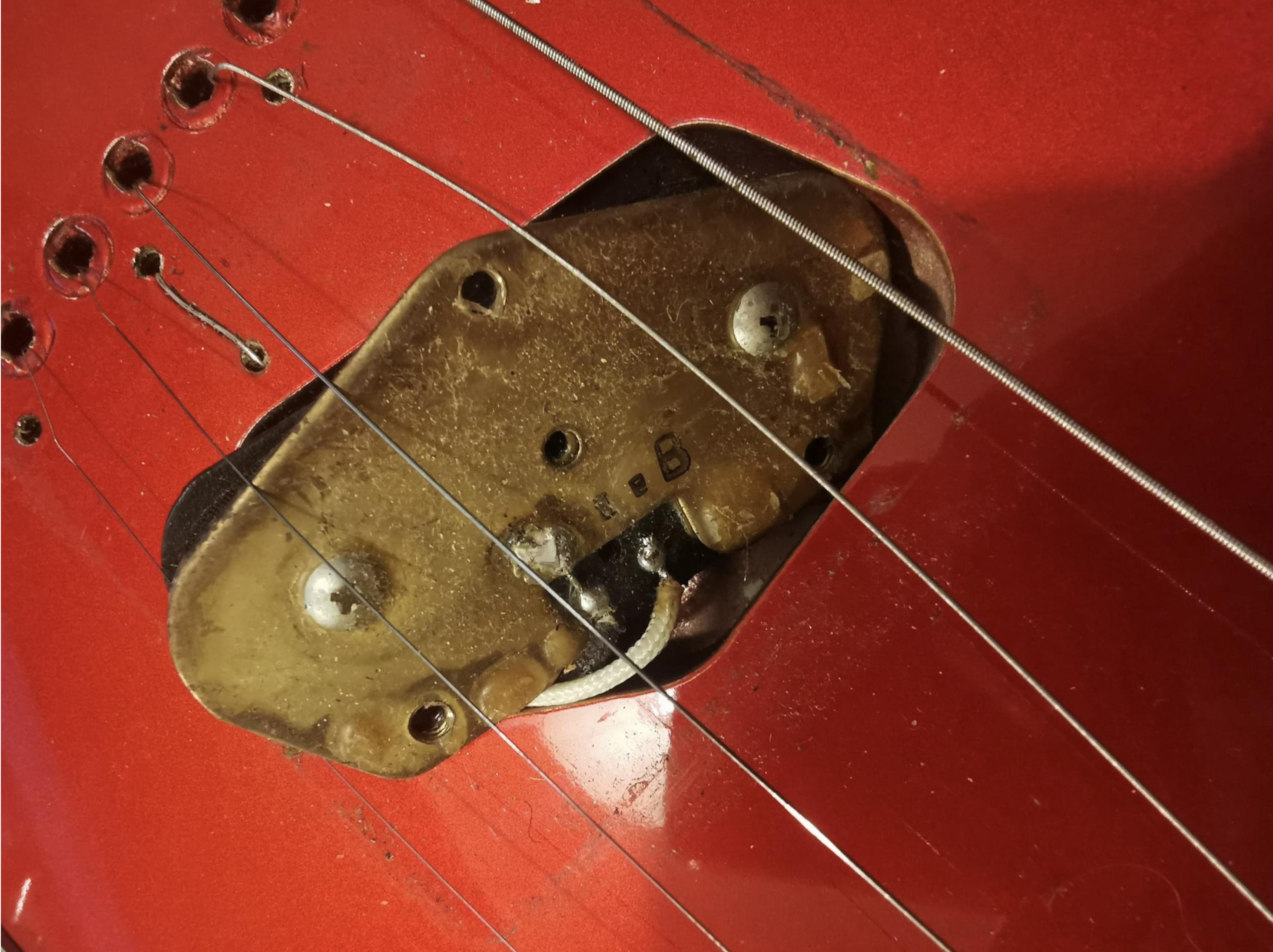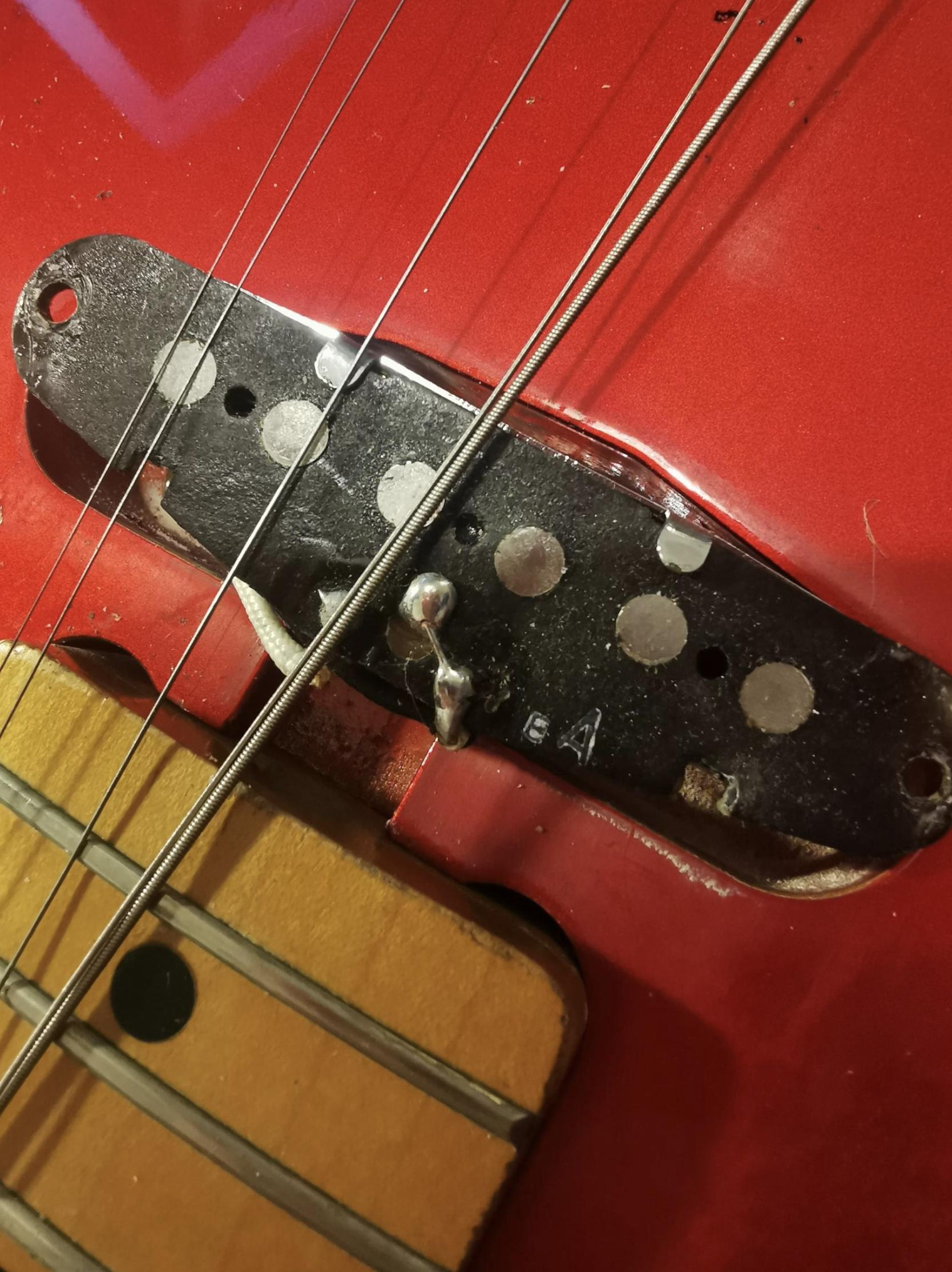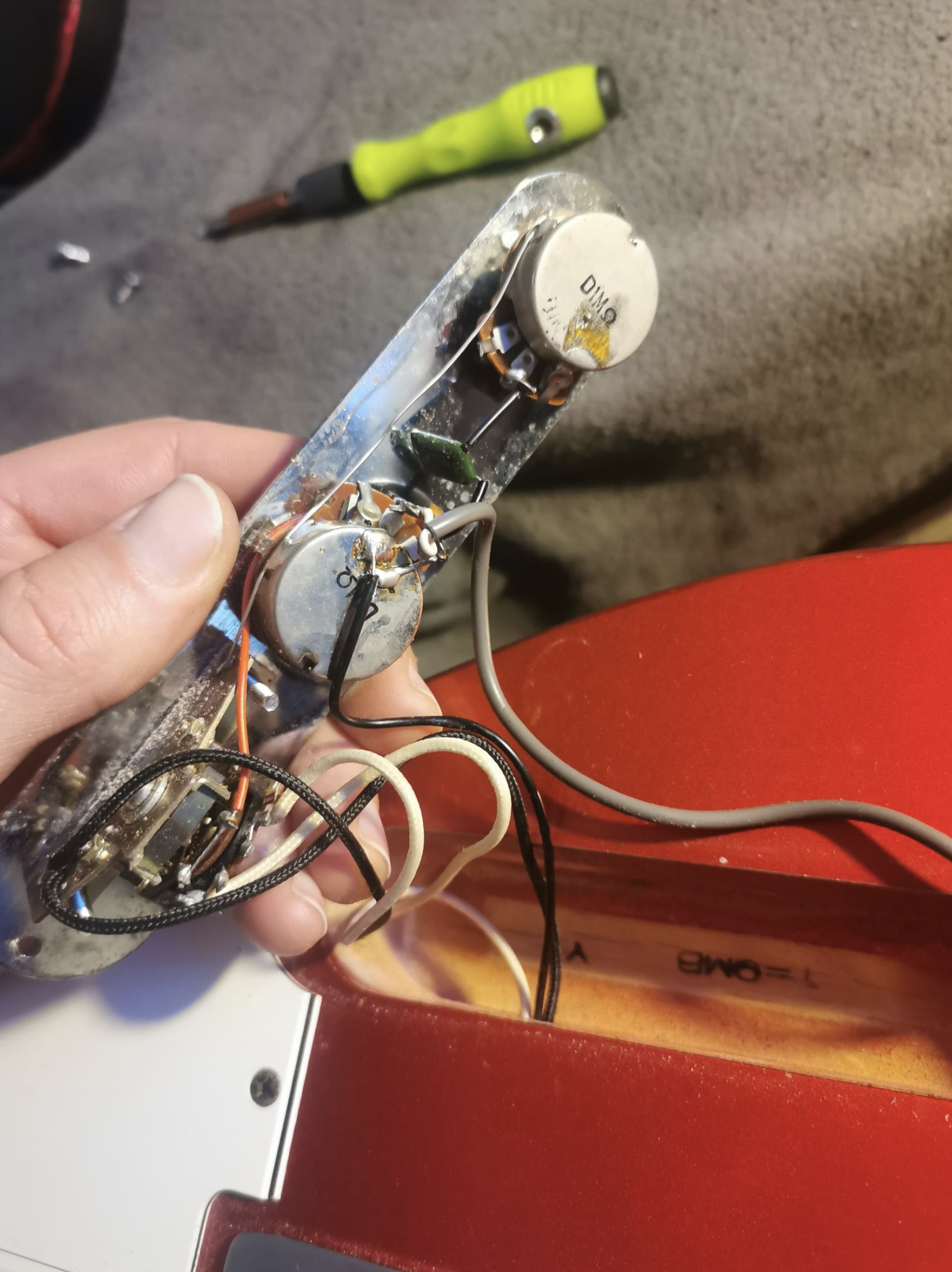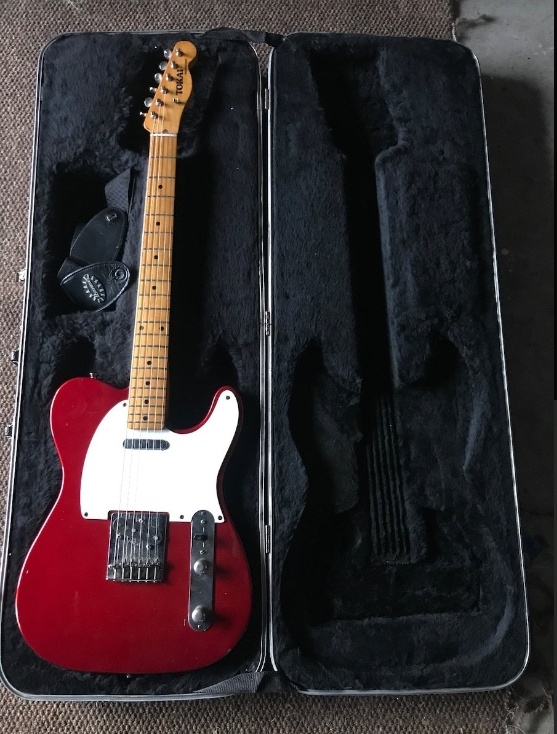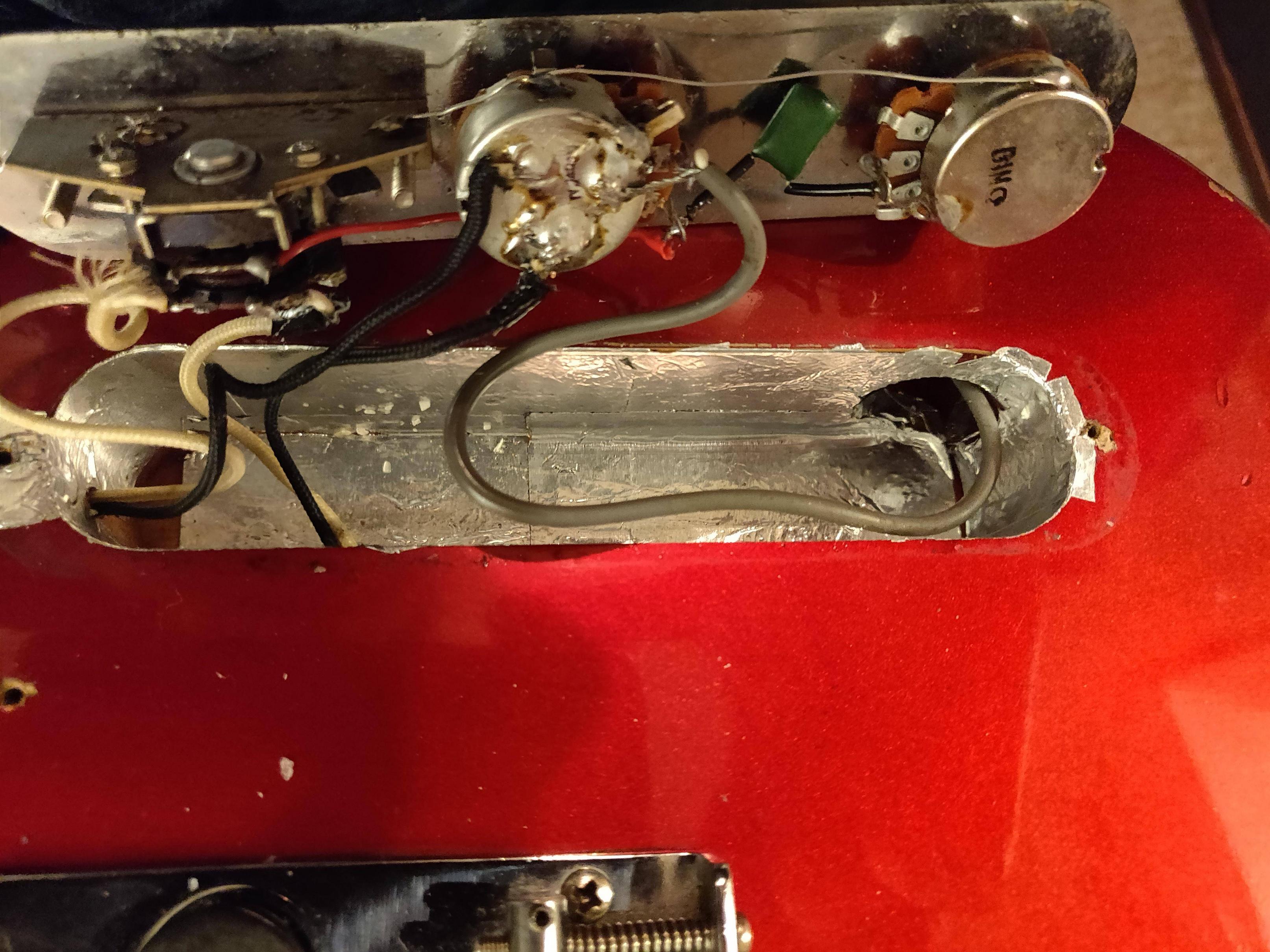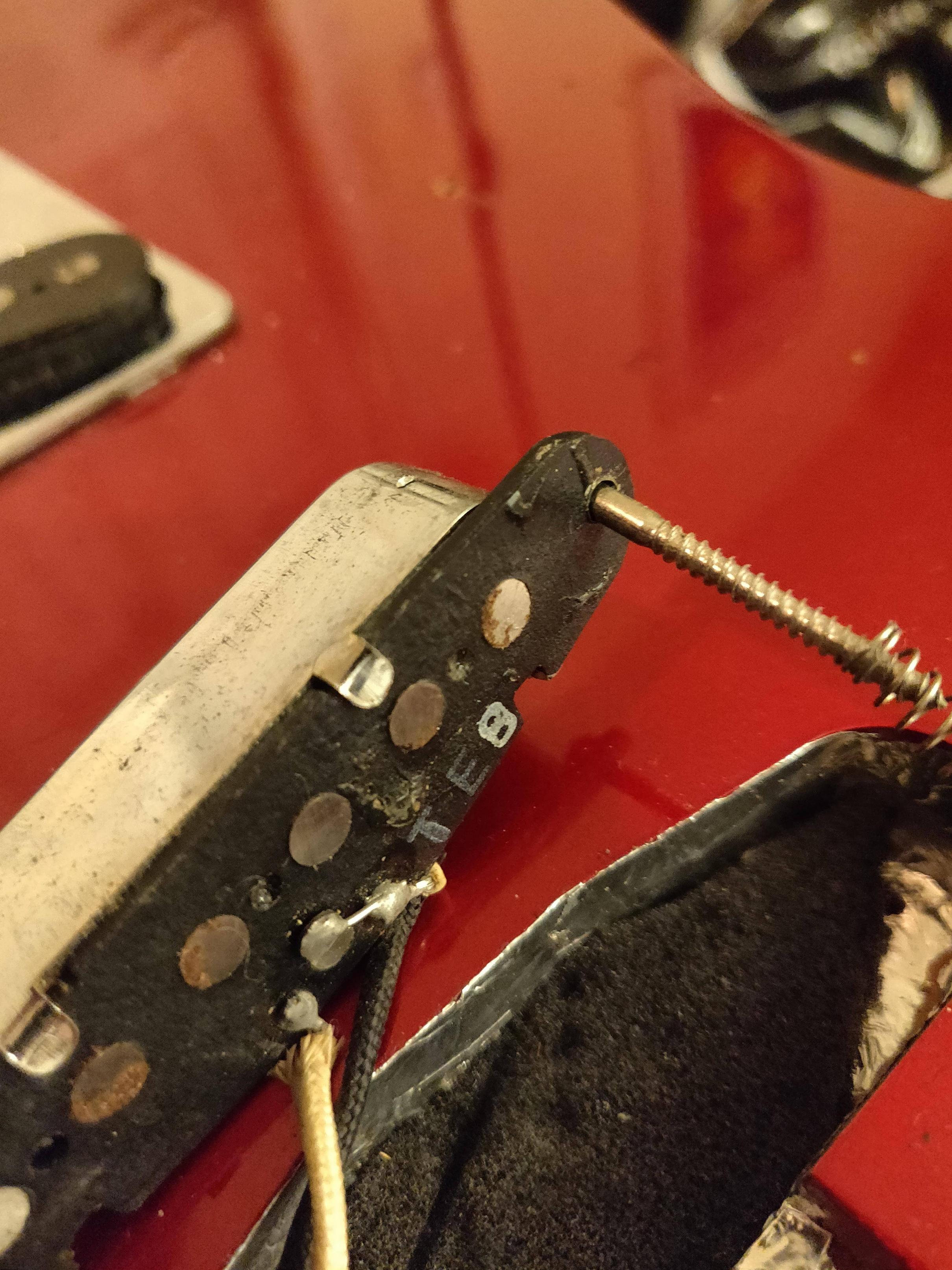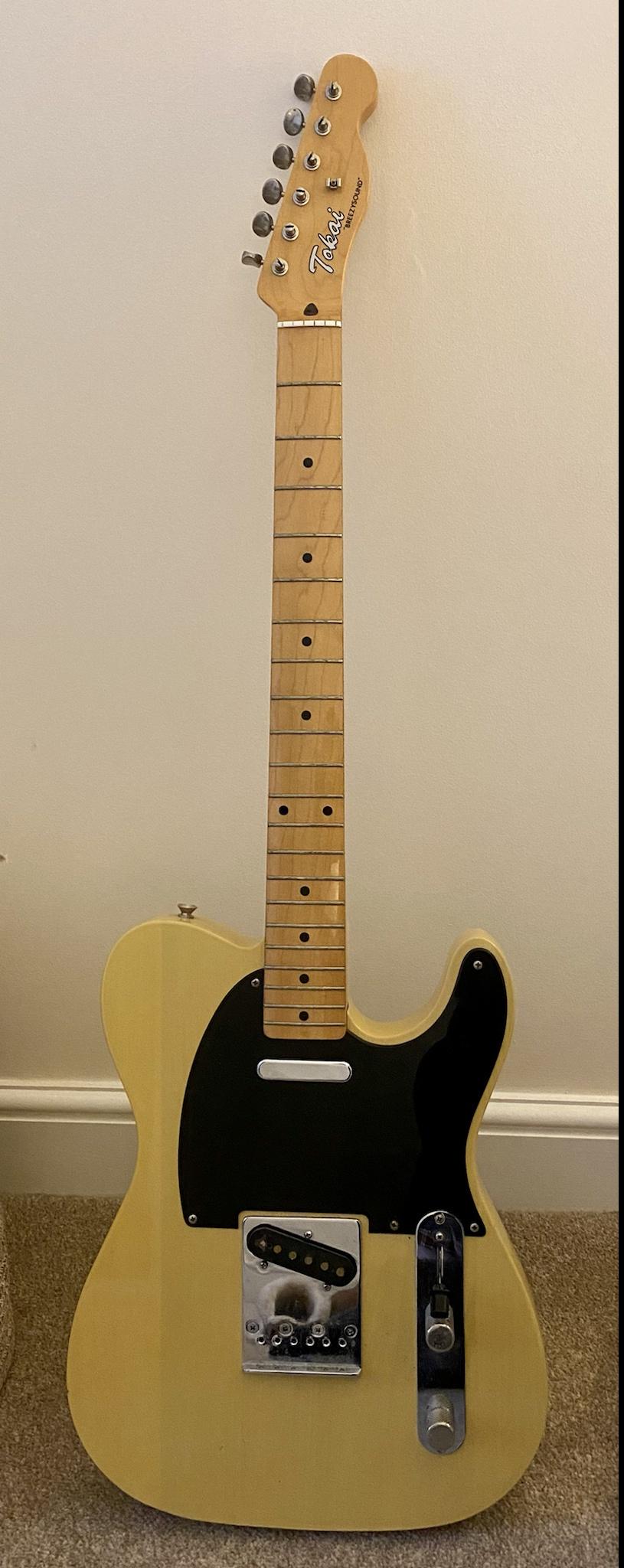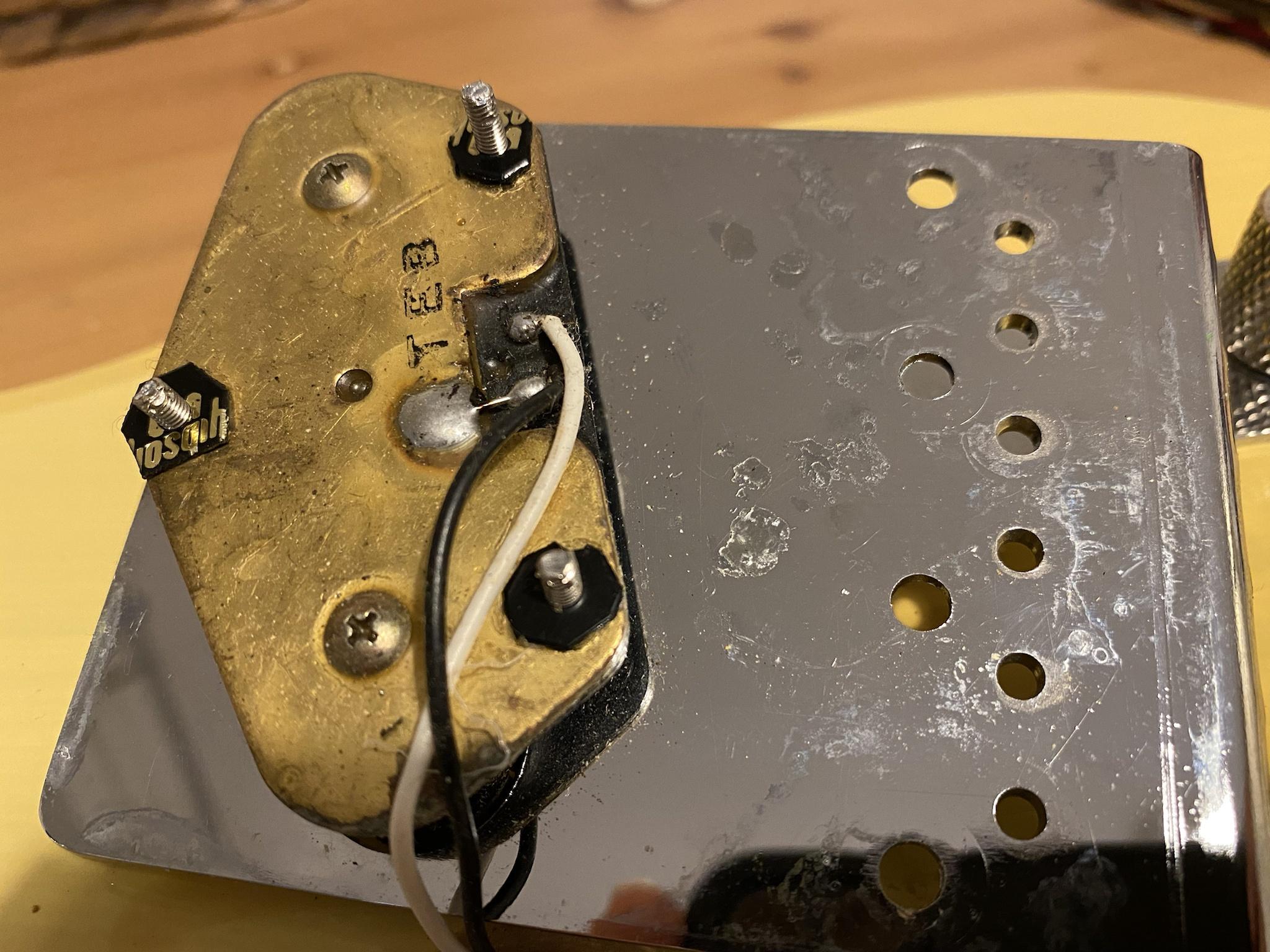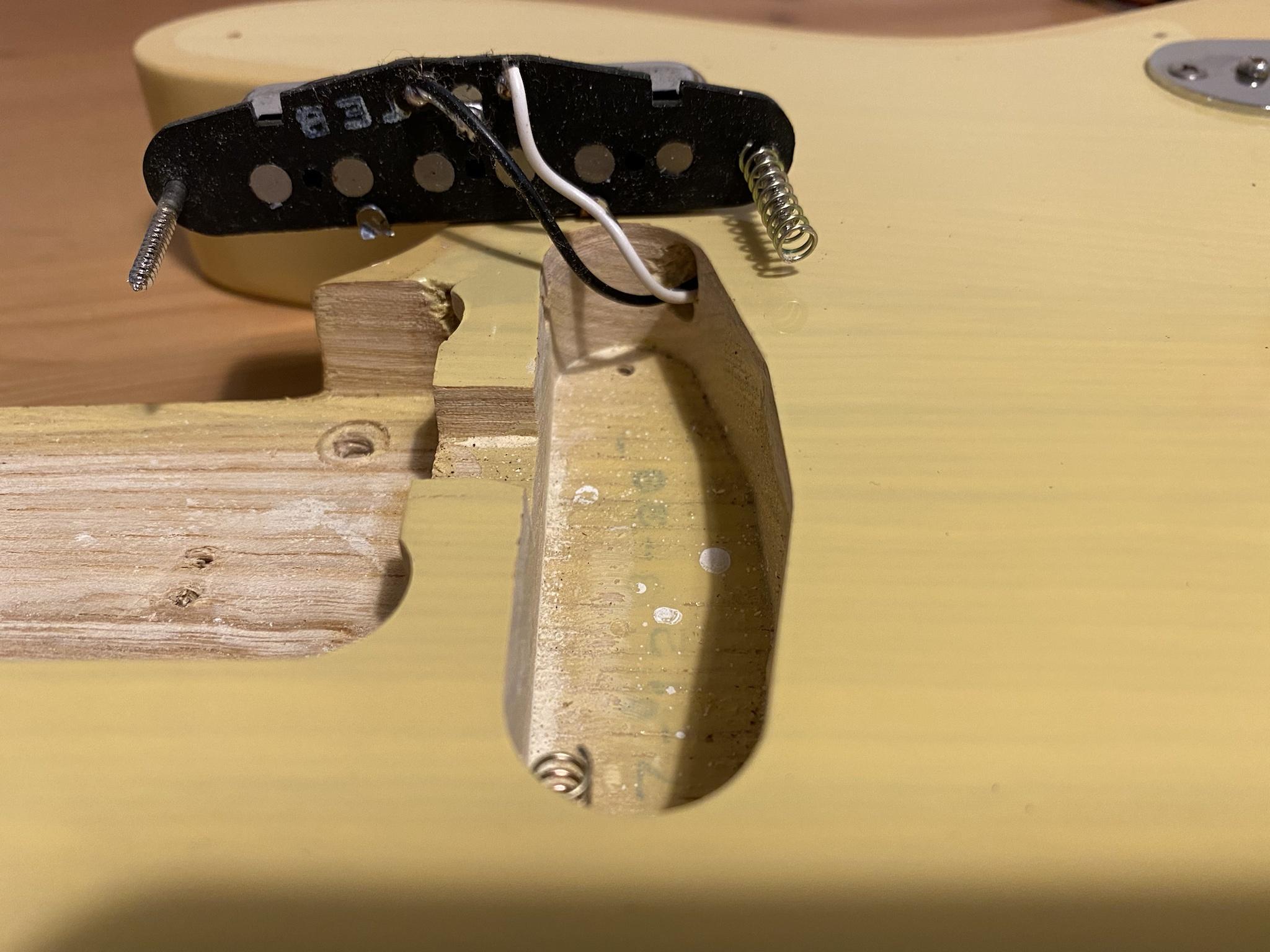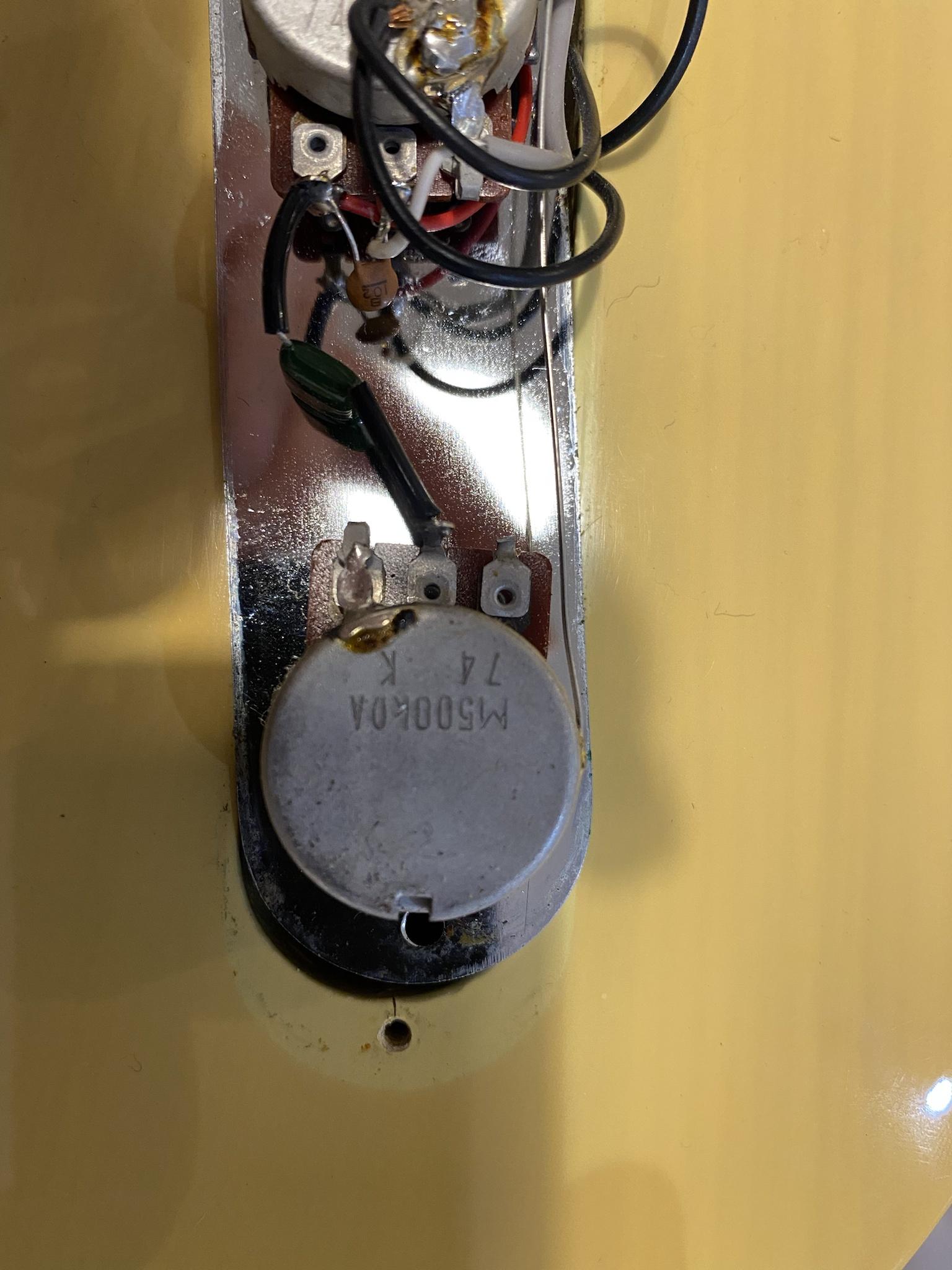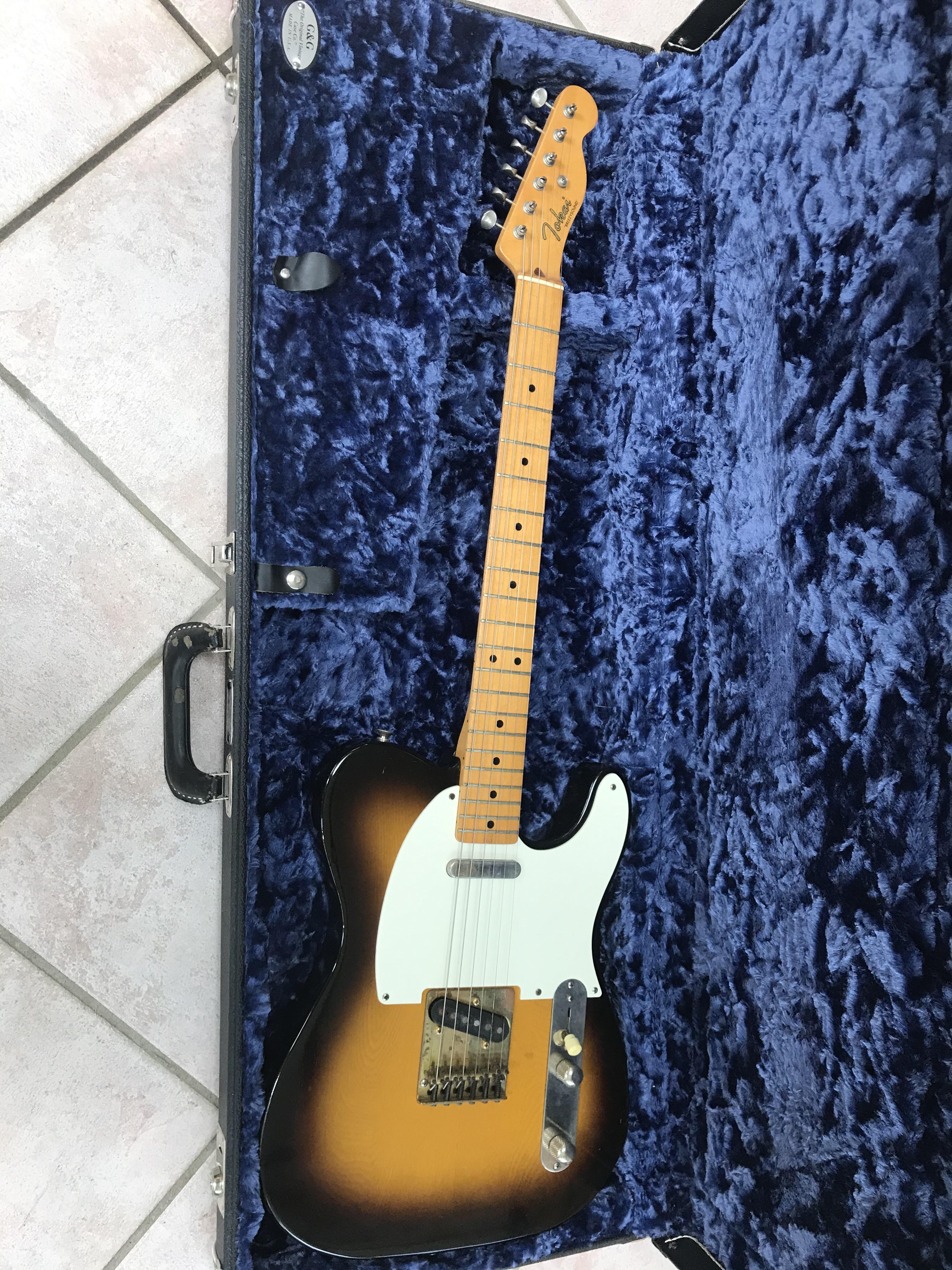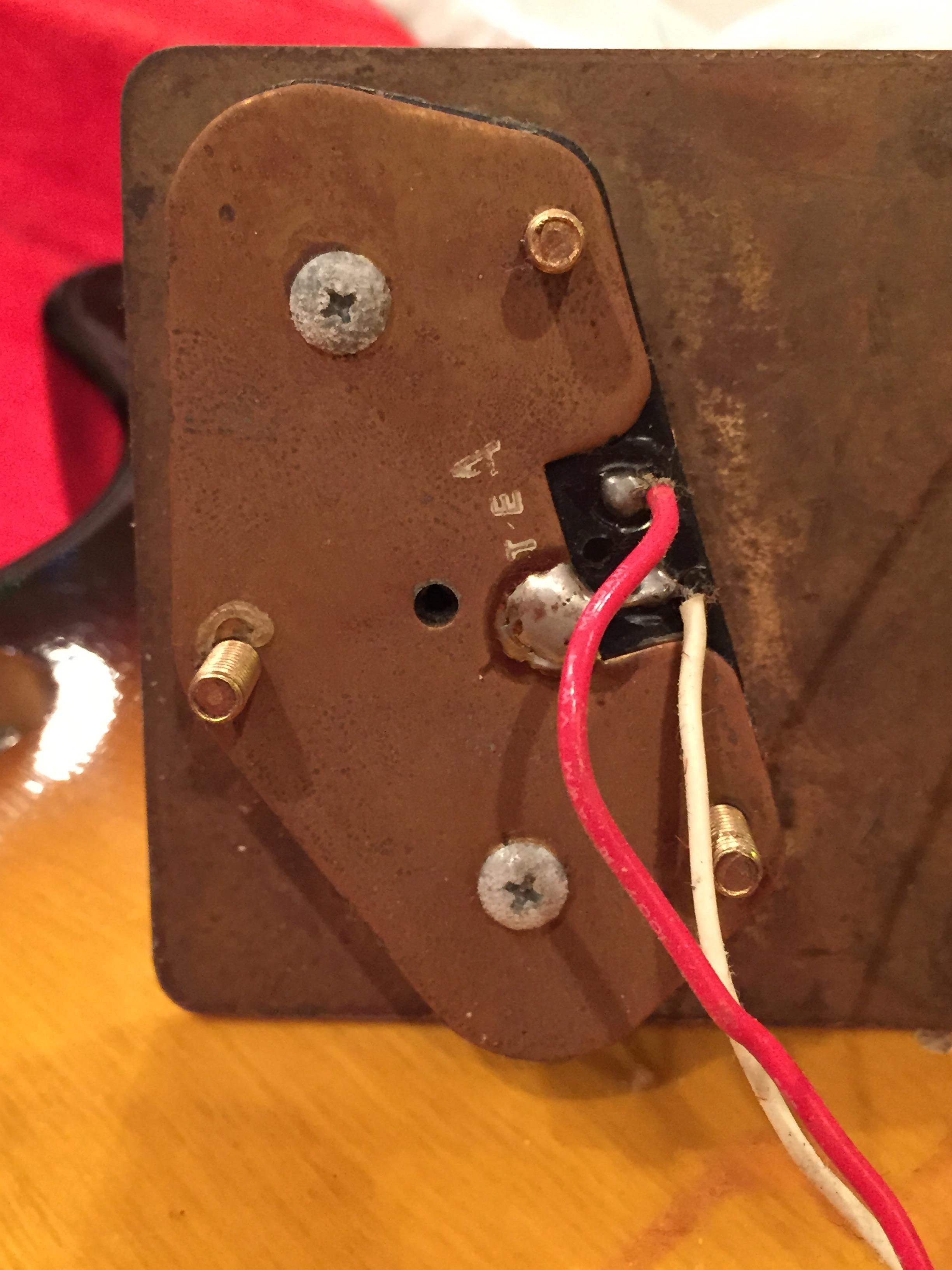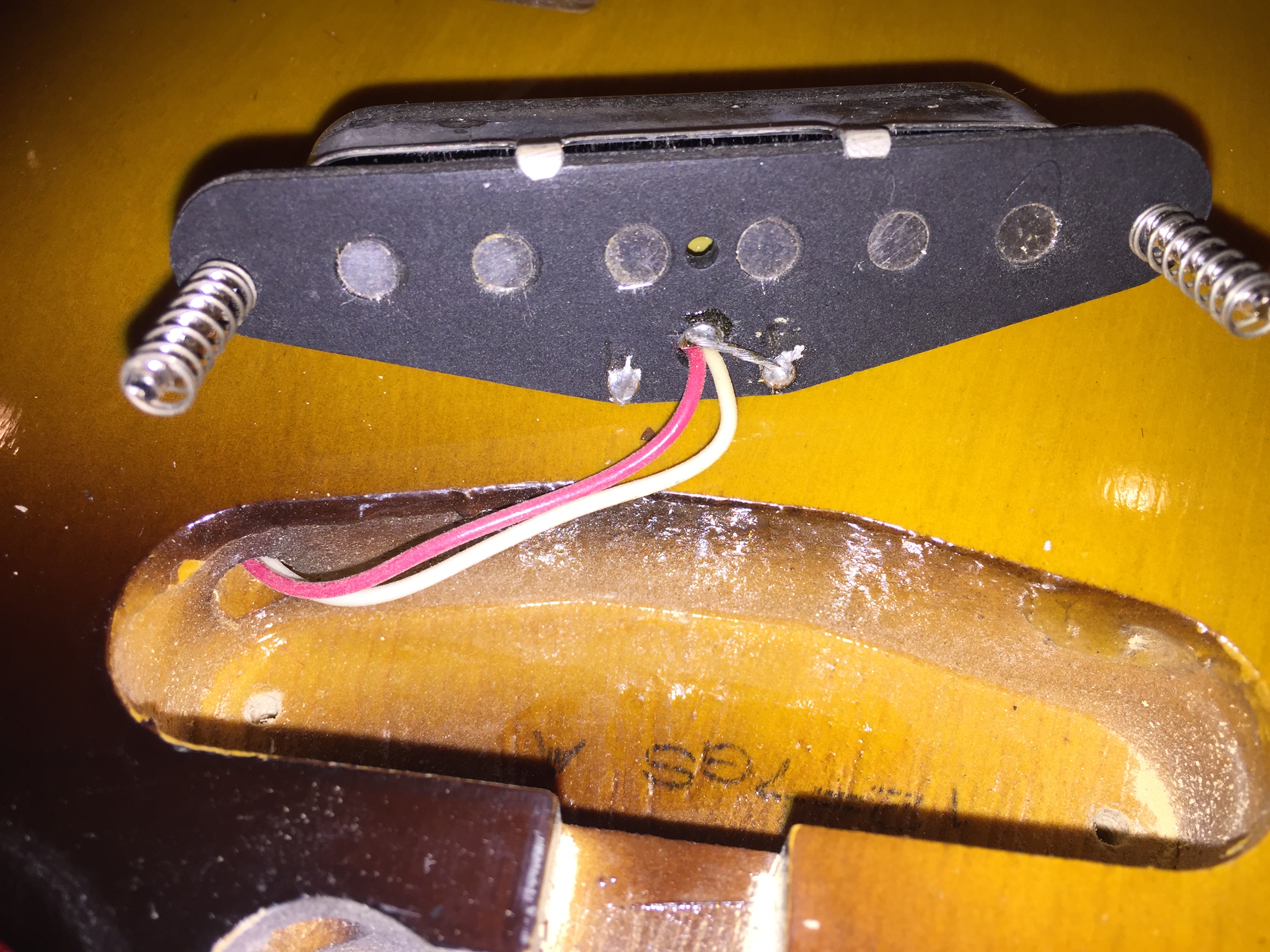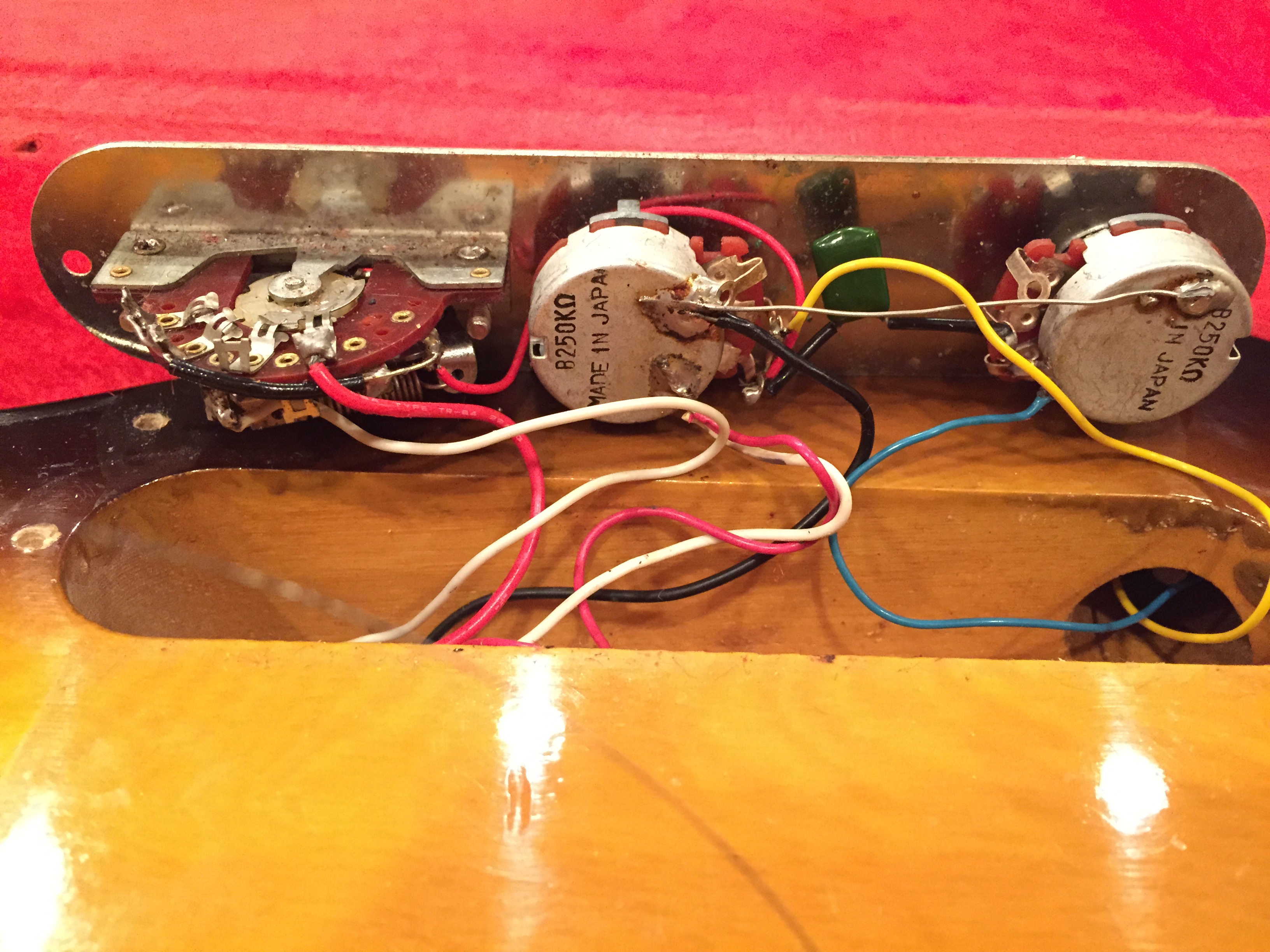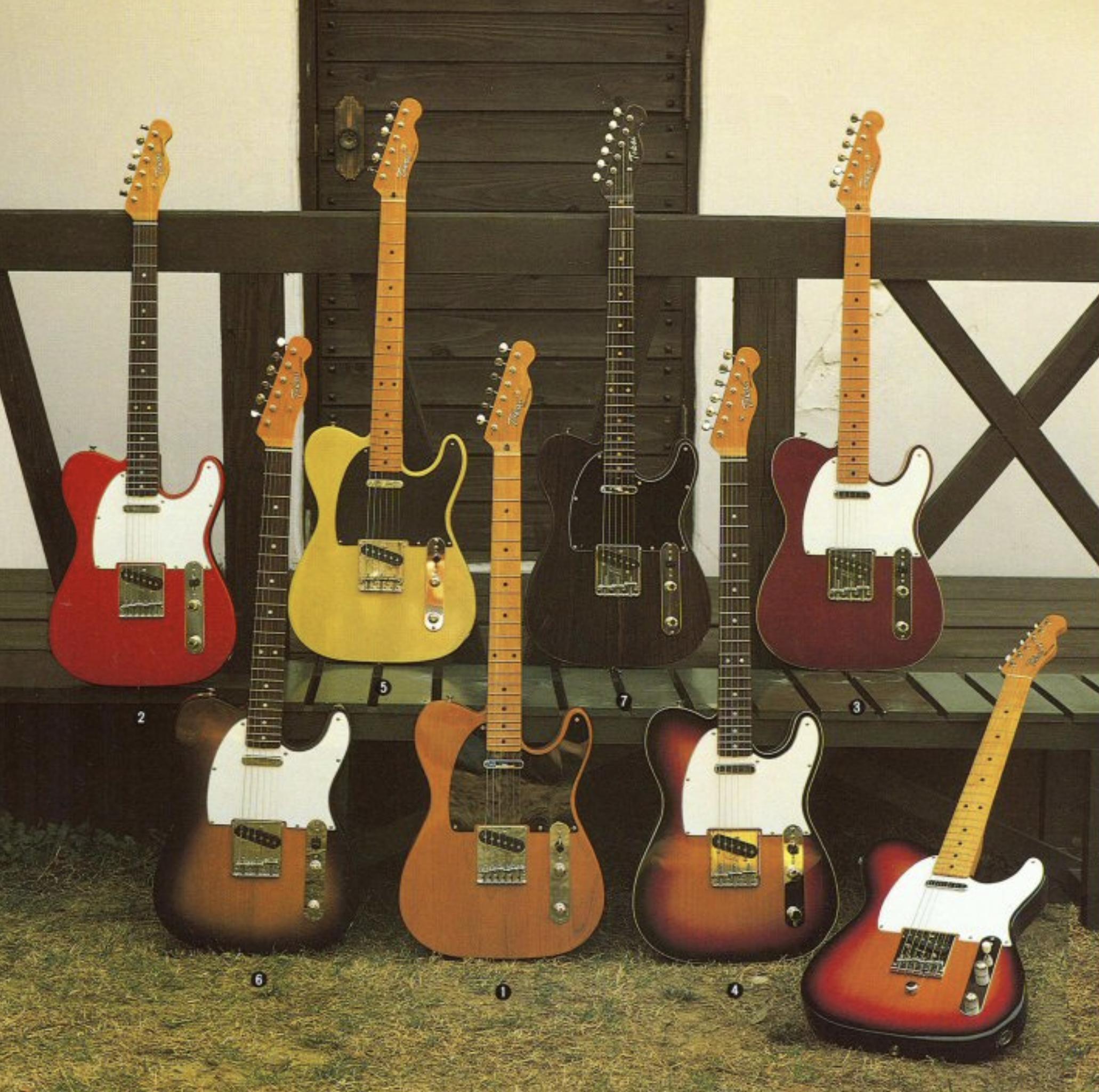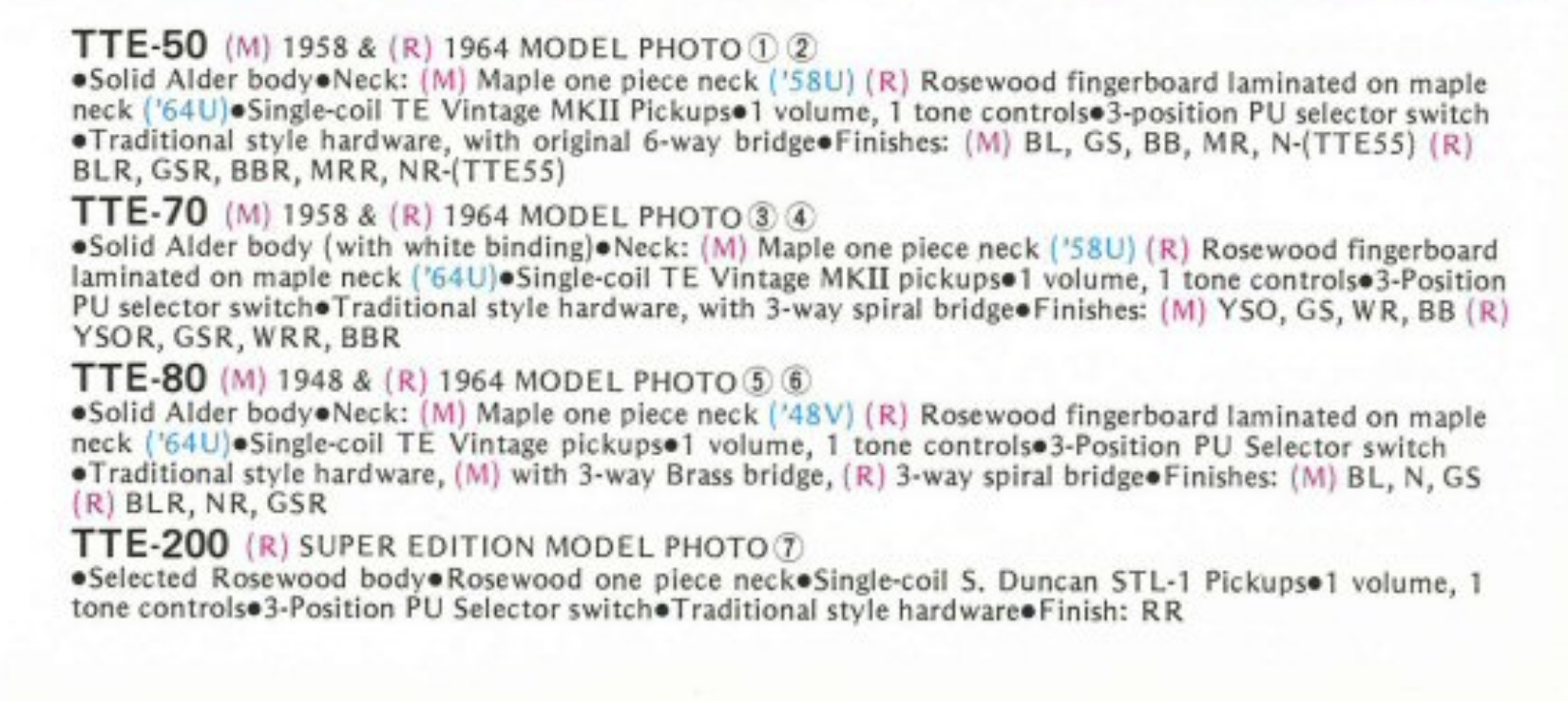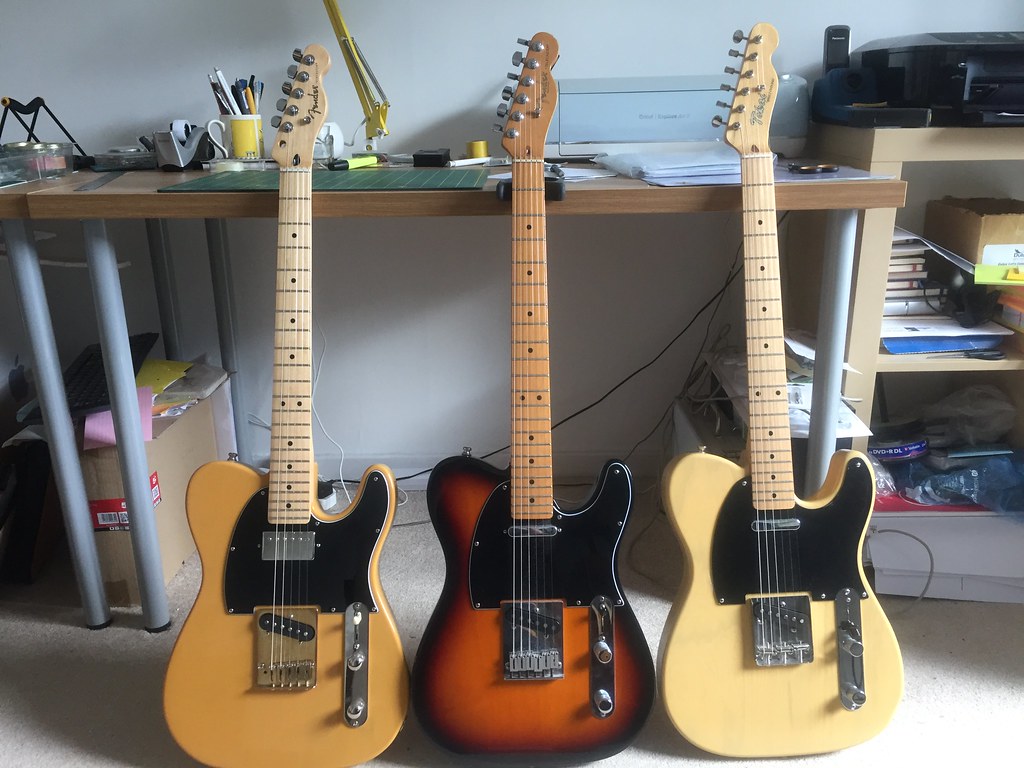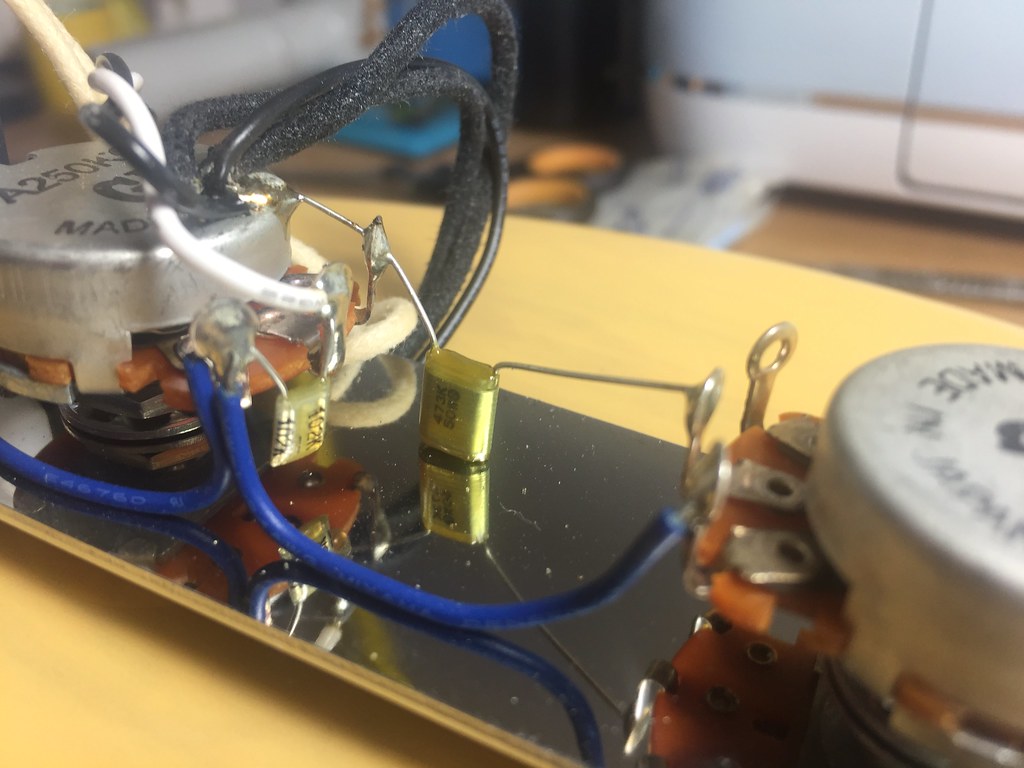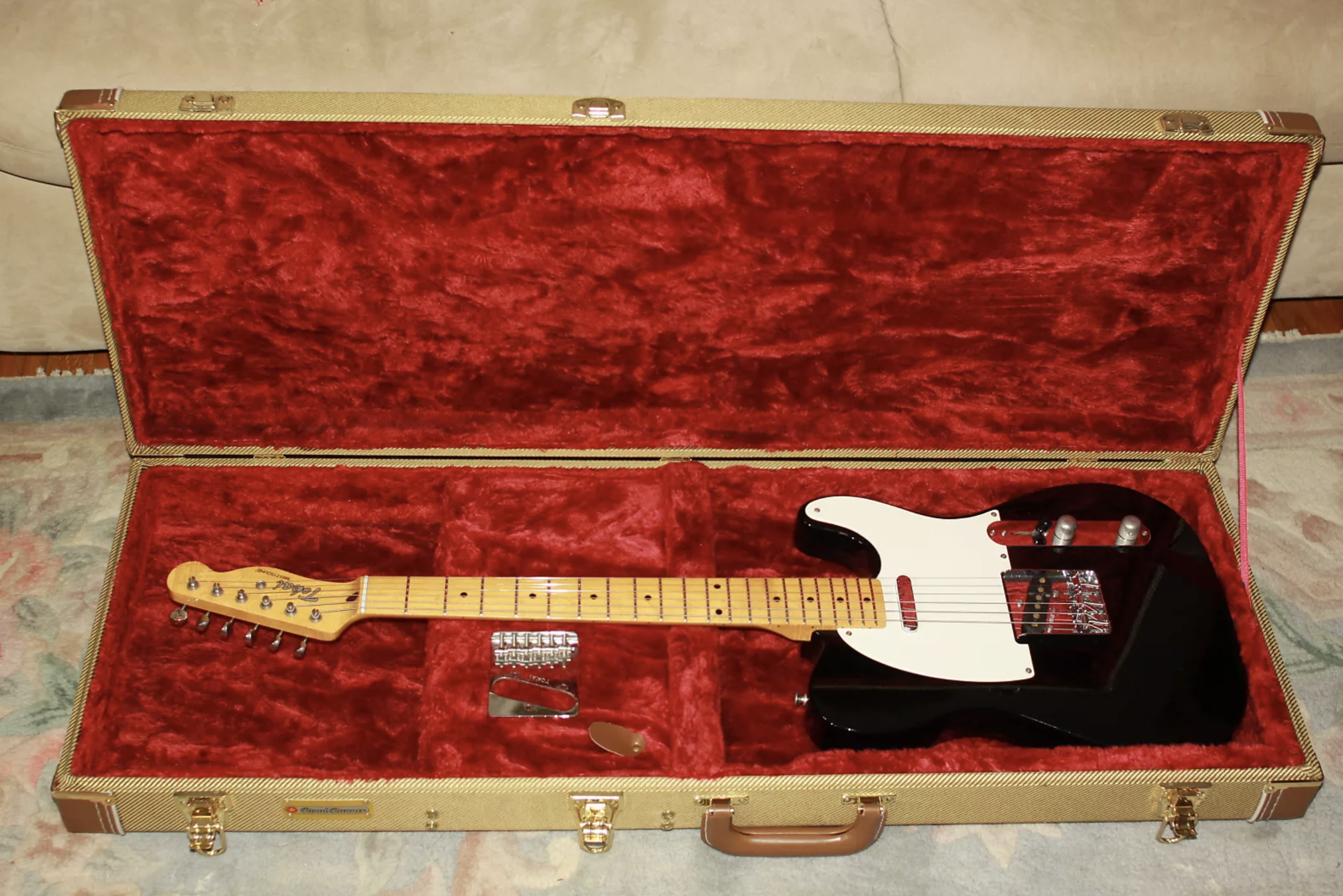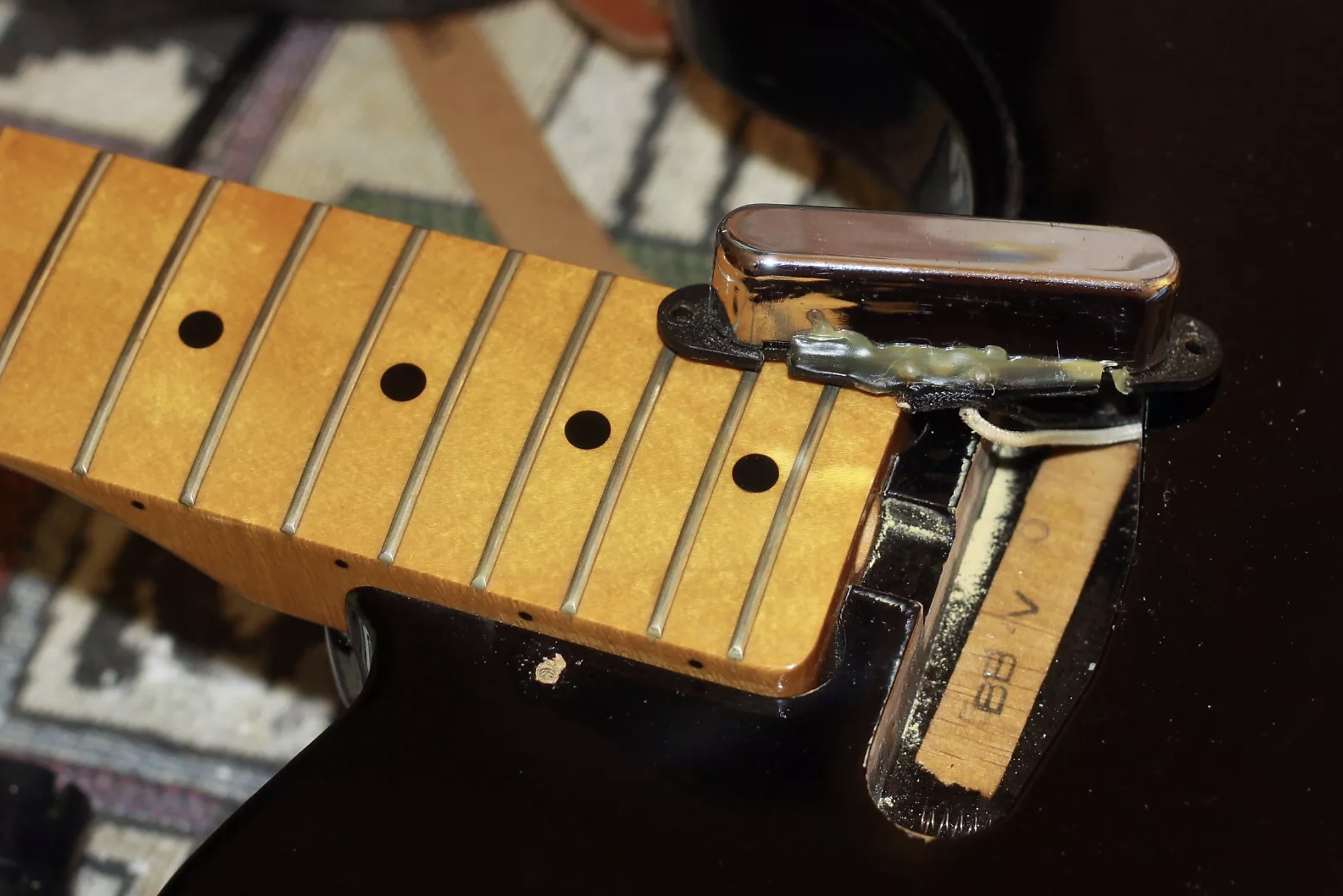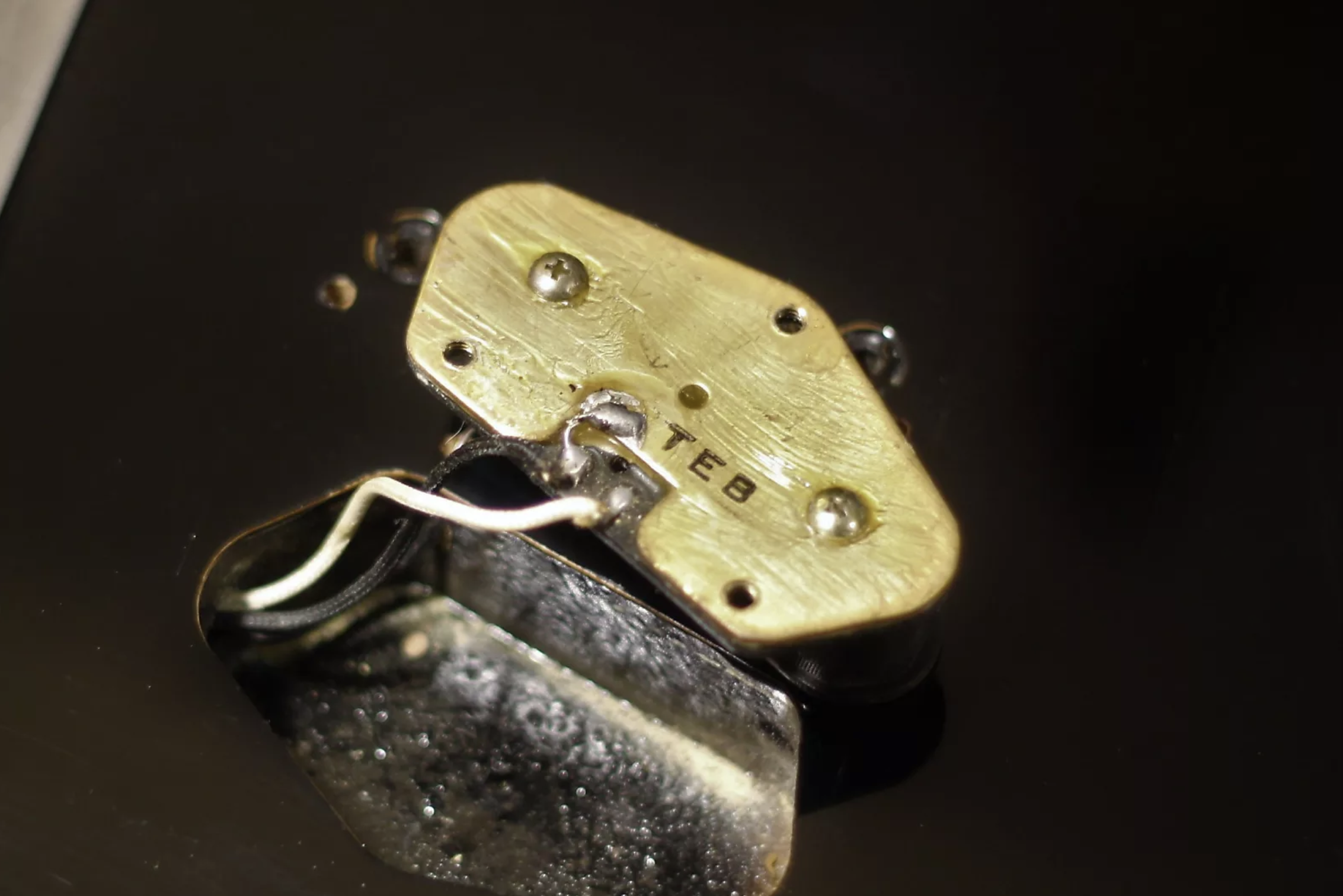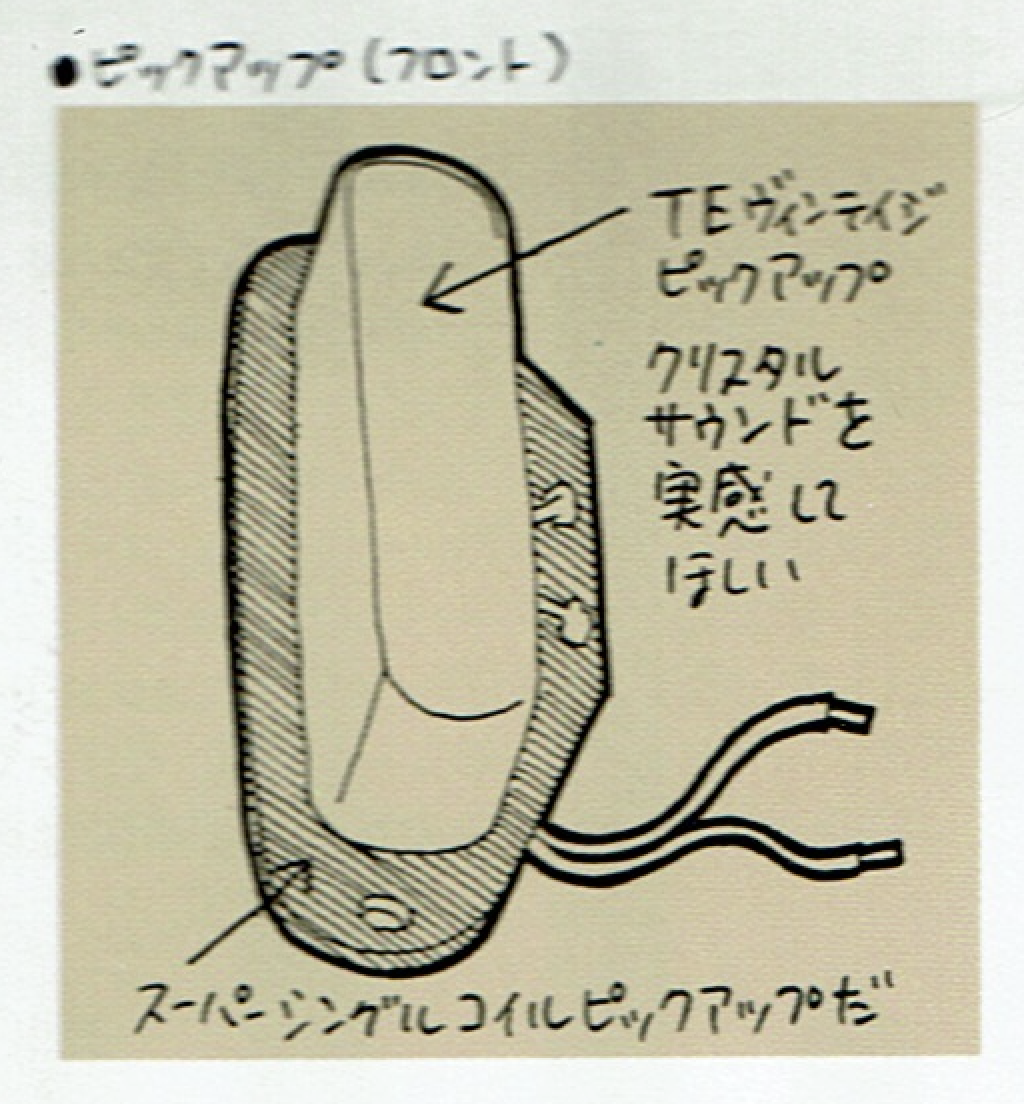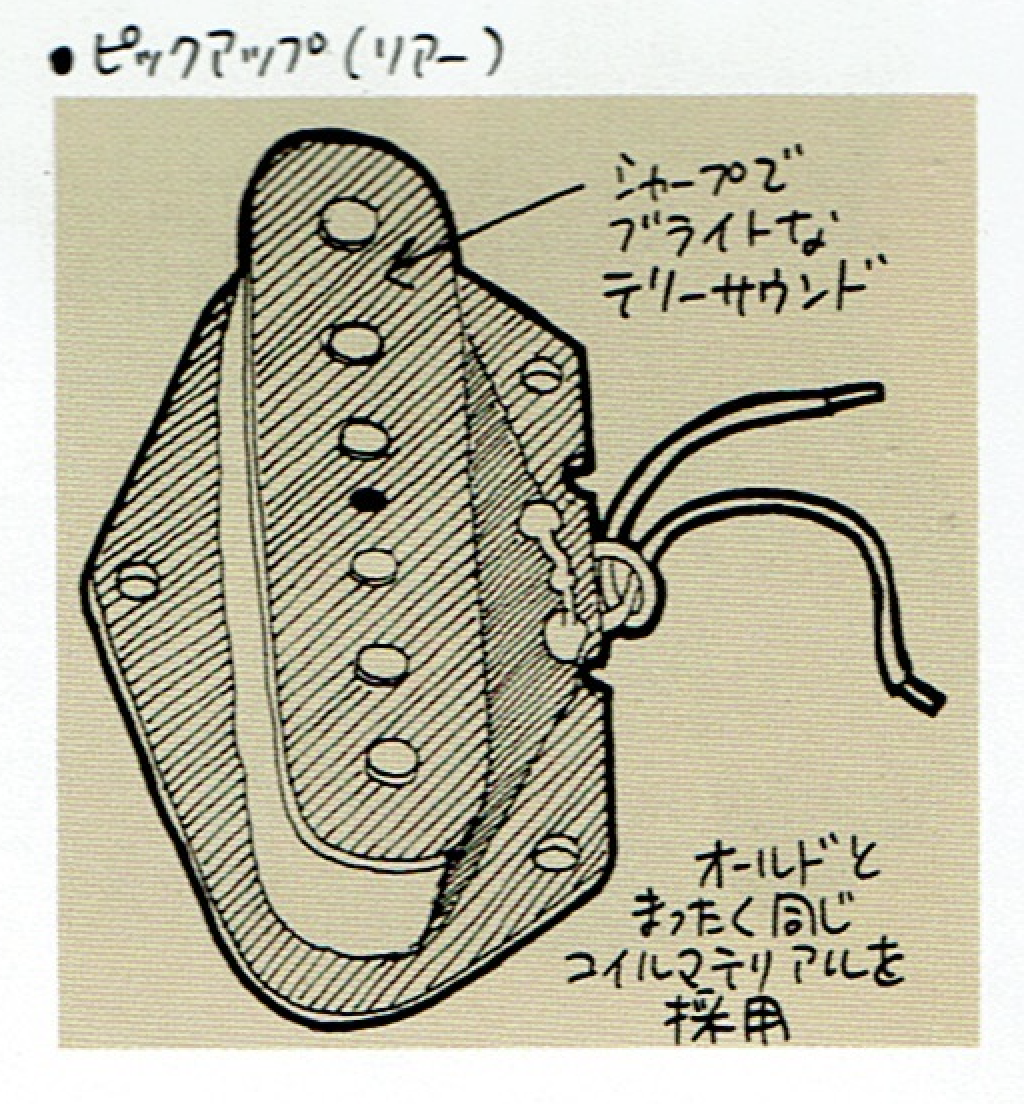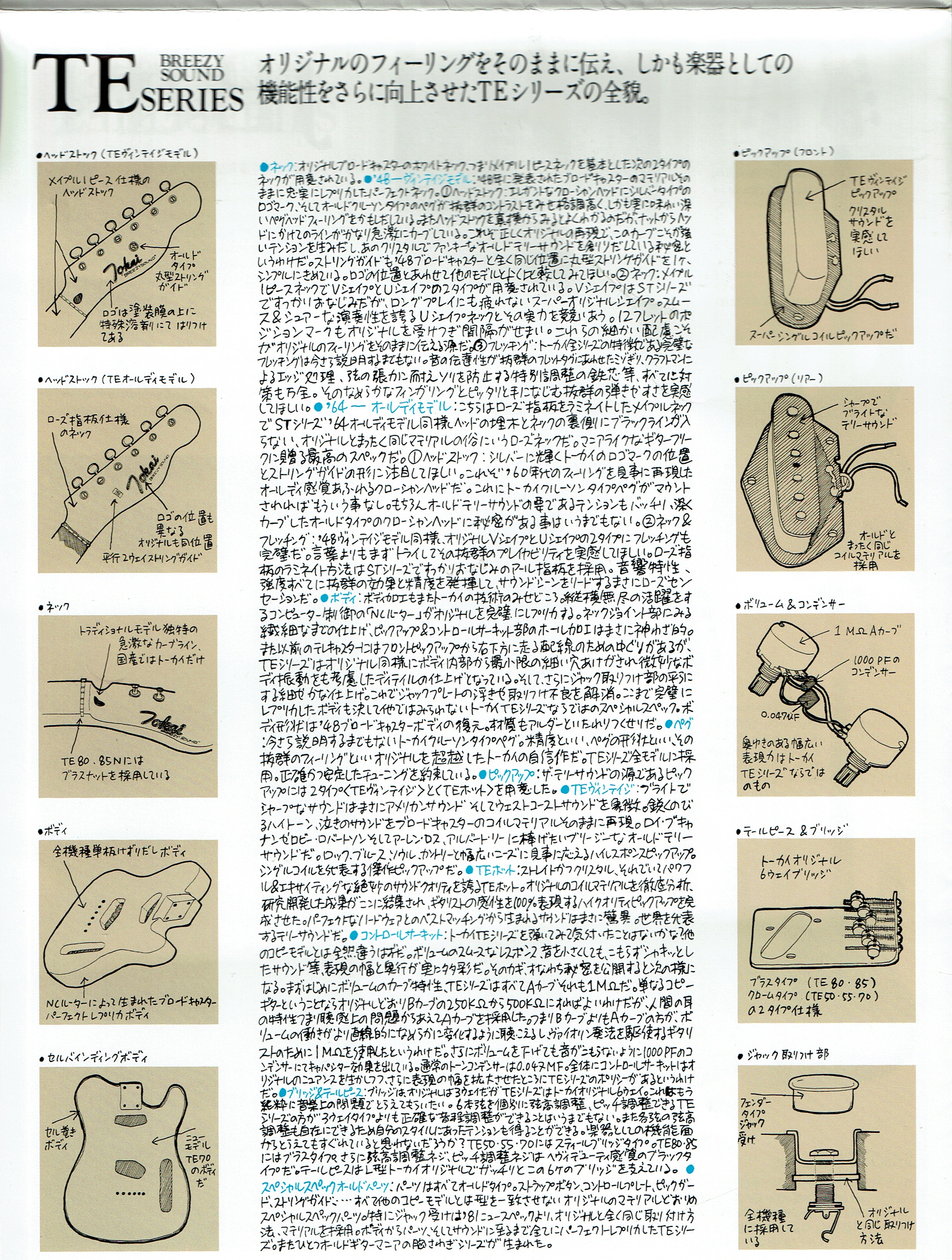1981 catalog.
"Pickup (front). TE Vintage Pickup. I want you to experience the crystal sound. It's a super single coil pickup"
"Pickup (rear). Sharp and bright sound. Uses exactly the same coil material as the old."
Google translation (not perfect):
Pickup: The source of The Tele Sound Two types <TE Vintage> and <TE Hot> are available.
TE Vintage. Bright. The sharp sound truly symbolizes the American sound and the West Coast sound. Sharply stretched The high tone and crying sound are reproduced as they are in the coil material of the broadcaster. Roy Buchanan, Robertson and Arlen Roth, a breathy old Tele dedicated to Albert Lee It's a sound. High response pickup that meets a wide range of needs such as rock, blues, soul, and country. It is a masterpiece pickup that represents a single coil.
TE Hot: Straight and crystal, yet powerful TE Hot boasts exquisite sound quality of Le & Exciting. Thorough analysis of the original coil material, The results of research and development are gathered here, and a high quality pickup that expresses 100% of the guitarist's sensibility is completed. I made it. The sound created by the best matching with the perfect swordwear truly represents the world of wonder. It's a Tele sound.
Control Circuit: Have you ever noticed by playing the Tokai TE series? It should be completely different from the copy model of. Smooth response of volume, crisp without muffled even if the sound is reduced. The range and depth of expression, such as the sound, is truly diverse. The key, that is, when the secret is disclosed, is as follows. First of all, the curve characteristics of the volume, all TE series are A curve, that is also IM. Just a copy. When it comes to guitars, you can change the B-curve from 250KS to 500KS as originally done, but the human ear I dared to adopt the A curve because of the characteristics of the above, that is, the problem of hearing. In other words, the A curve is better than the B curve. It sounds like the function of the volume changes more linearly and smoothly, and it is a guitar that makes full use of the violin playing method. I used IMQ for the strike. 1000PF so that the sound will not be muffled even if the volume is lowered further The capacitor effect is produced by the capacitor. A normal tone condenser is 0.047MF. The TE series policy is where the range of expression is further expanded while making the best use of the nuances of the original.




